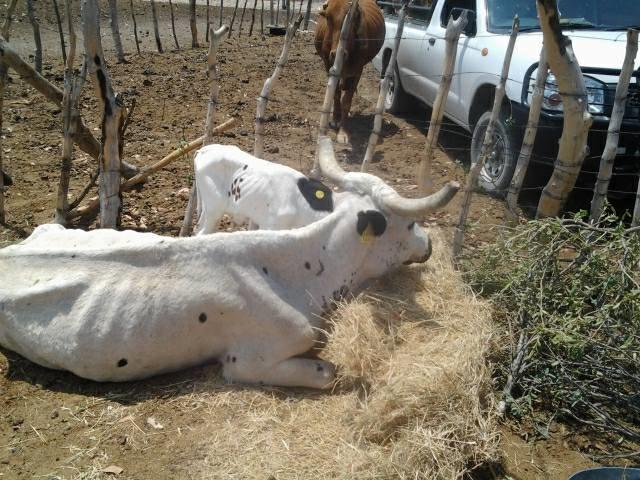Kunene south farmers concerned about late rains
Some cattle in the region are not even able to stand on their own and have to be fed the fodder government has contributed as drought relief.
Farmers in Kunene south say even the late rains expected to fall in the new year would not be enough to save their livestock and crops.
The farmers say very little rain has been received in the southern part of the region over the past two months. A farmer at Smallscregen, Alpheus Awaseb, 65, told Nampa that his livestock still have not picked up weight and he expects they will die after the first good rains. “I am happy that Namibia is forecast to be getting rain, but I am afraid that in the process some livestock will have to die because they are too thin. Although we got some rain in the area so far, what we need to understand is that cattle are more likely to die during the rainy season because they are thin and weak,” he stressed.
Awaseb said some cattle in his kraal are so weak they are unable to stand and only the fodder the government has contributed as drought relief is keeping them alive.Manfred Goraseb, 71, who owns a garden at farm Landes, says his hopes of a large garden for household consumption and to generate income are slowly fading.
“Although we are expecting a fair rainy season in the region next year, we are not sure whether our crops will survive.
I am selling watermelon, pumpkin and cucumber that I plant in my garden but with late rains, I am not sure if the harvest will be good. What usually happens when the rain is late is that winter kills the small plants that have just started growing.”
Goraseb added that he mostly farms with small livestock and had already lost some of them during the rains that were received in the past two months.
Another farmer, Gerson Gurirab, 75, said there would be devastating effects and farmers need to prepare themselves ahead of the expected rains.
“Animals will obviously die, and crops won't give much for consumption. We just need to prepare ourselves as farmers that are living in one of the driest regions in the country. We need to start feeding our cattle in our kraals before the rains come. That way they will gain weight and will be able to survive,” he said.
Weather experts have predicted good rains for the country in the second part of the rainy season from January to March 2020.
NAMPA
The farmers say very little rain has been received in the southern part of the region over the past two months. A farmer at Smallscregen, Alpheus Awaseb, 65, told Nampa that his livestock still have not picked up weight and he expects they will die after the first good rains. “I am happy that Namibia is forecast to be getting rain, but I am afraid that in the process some livestock will have to die because they are too thin. Although we got some rain in the area so far, what we need to understand is that cattle are more likely to die during the rainy season because they are thin and weak,” he stressed.
Awaseb said some cattle in his kraal are so weak they are unable to stand and only the fodder the government has contributed as drought relief is keeping them alive.Manfred Goraseb, 71, who owns a garden at farm Landes, says his hopes of a large garden for household consumption and to generate income are slowly fading.
“Although we are expecting a fair rainy season in the region next year, we are not sure whether our crops will survive.
I am selling watermelon, pumpkin and cucumber that I plant in my garden but with late rains, I am not sure if the harvest will be good. What usually happens when the rain is late is that winter kills the small plants that have just started growing.”
Goraseb added that he mostly farms with small livestock and had already lost some of them during the rains that were received in the past two months.
Another farmer, Gerson Gurirab, 75, said there would be devastating effects and farmers need to prepare themselves ahead of the expected rains.
“Animals will obviously die, and crops won't give much for consumption. We just need to prepare ourselves as farmers that are living in one of the driest regions in the country. We need to start feeding our cattle in our kraals before the rains come. That way they will gain weight and will be able to survive,” he said.
Weather experts have predicted good rains for the country in the second part of the rainy season from January to March 2020.
NAMPA




Comments
Namibian Sun
No comments have been left on this article